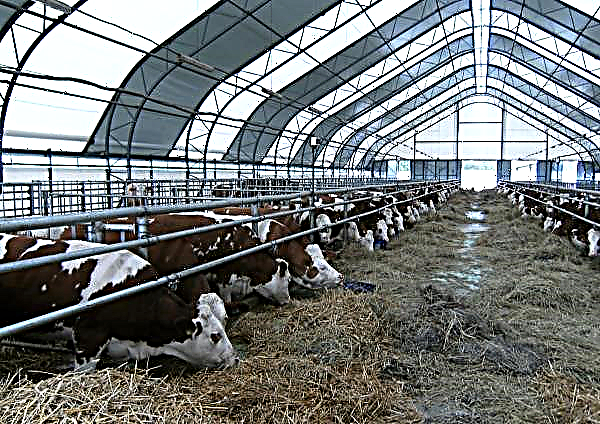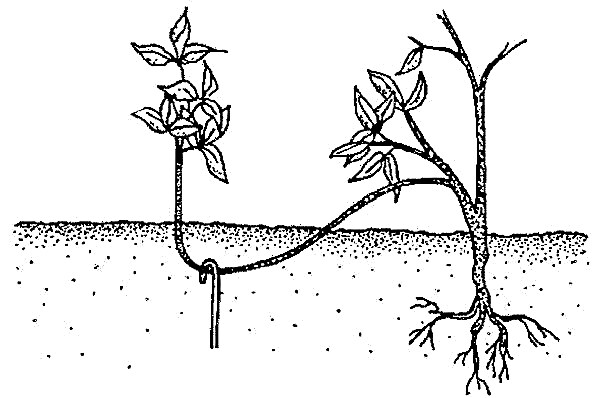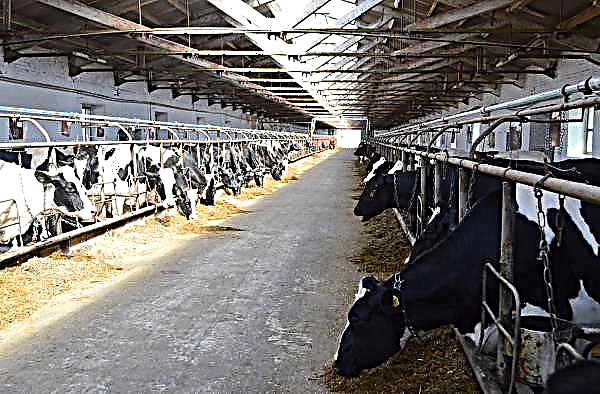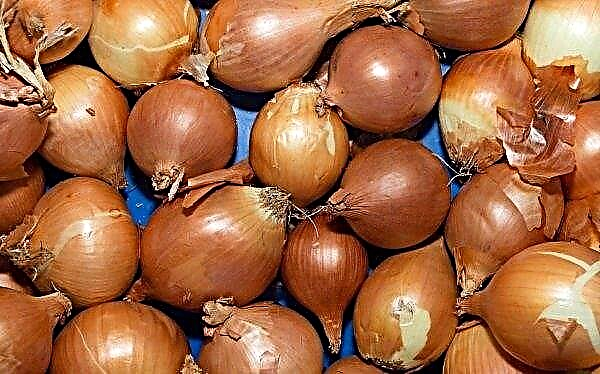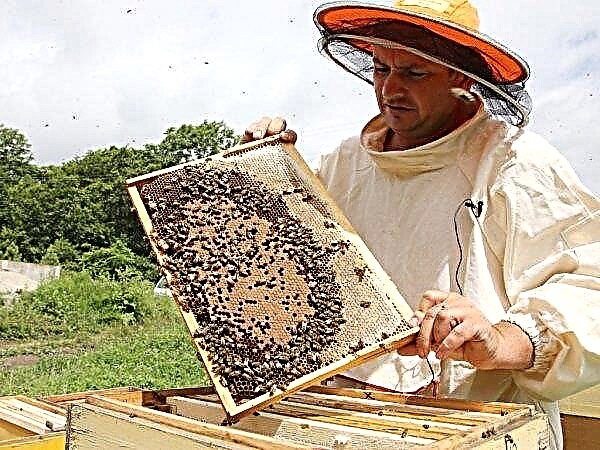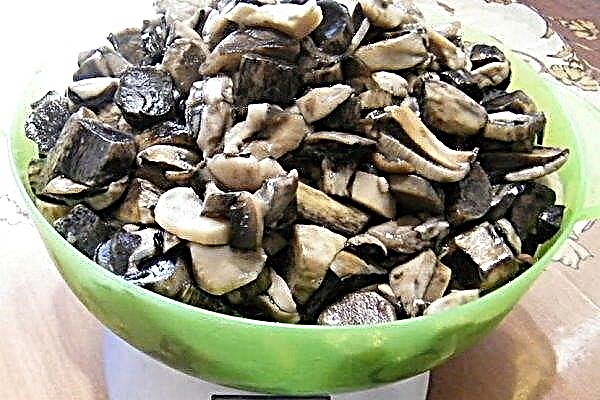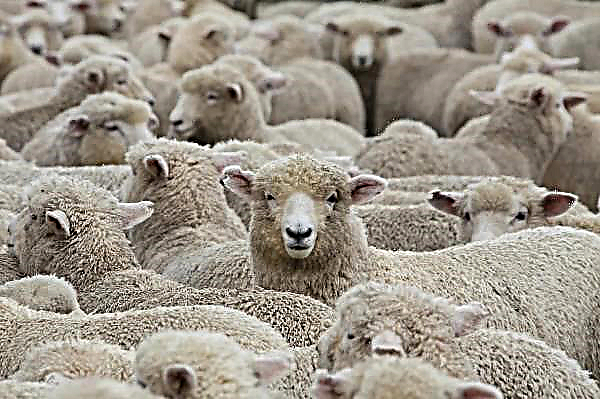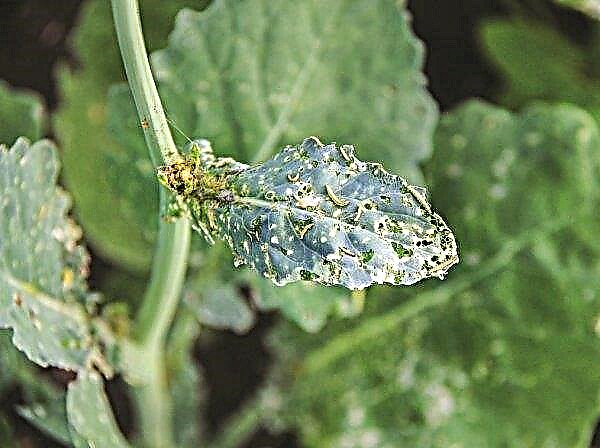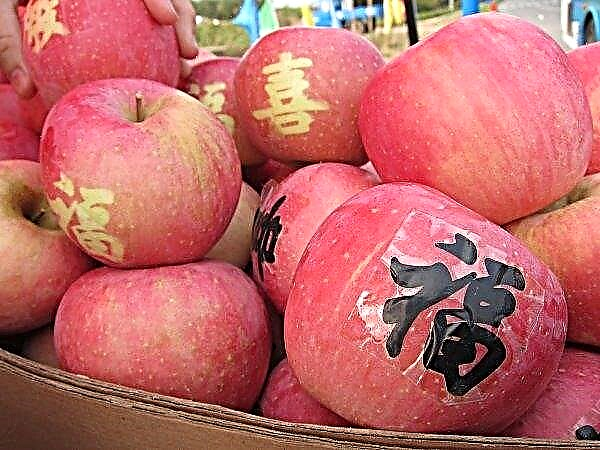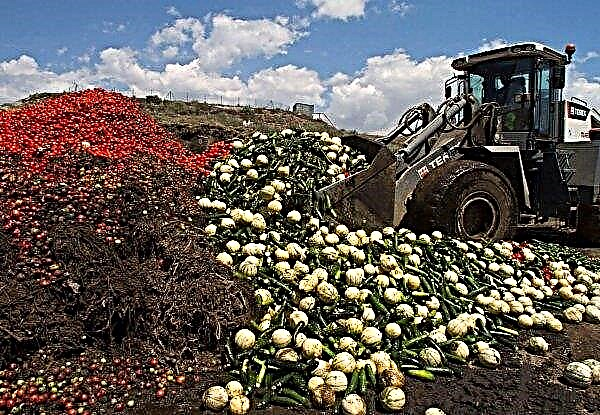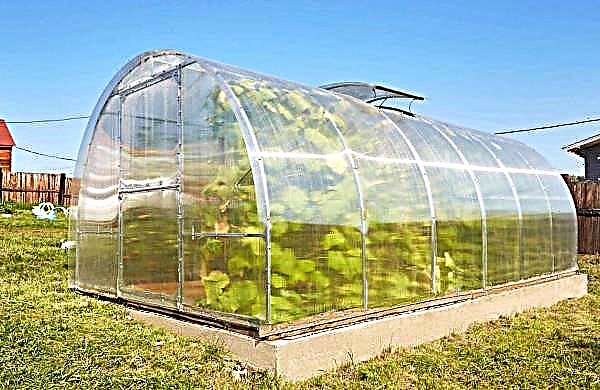Pine nuts are seed kernels that are widely used in food in Siberia and beyond. The popularity of these seeds is related to their taste, and most importantly, their usefulness to the human body.
How and on which Siberian pine nuts grow
Cedar is a coniferous tree distributed throughout the European continent. However, pine nuts have nothing to do with this plant. The seed kernels that many have loved are found in the cones of Siberian cedar pine. This tree has an external resemblance to cedar, which mistakenly led to the appearance of a name for pine nuts.
Siberian pine is a coniferous tree reaching 40 m in height. The plant has strong branches that form a dense crown layer with several peaks. The needles are not coarse, and its length can be up to 10 cm.
Did you know? The seeds of pine (Italian pine) are similar to those of the Siberian pine and also well satisfy hunger. That is why the soldiers of Ancient Rome ate them on campaigns.
The main difference between Siberian cedar pine and cedar is that in the first plant, nuts are suitable for food, and the seeds of the second can not be eaten in any form. The ranges of trees are also different: cedar grows in the Mediterranean, the Middle East and the Himalayas due to low frost resistance.
What do pine nuts look like
Cedar pine nuts are found directly in the cones of the plant, the length of which can reach 13 cm and a width of 8 cm. These mature mutated shoots have an elongated shape. It is noteworthy that at the first stages of development, the cones look unusual: they are painted in a purple hue, but over time they change it to the usual brown.
The structure of the seeds is simple: they consist of a brown shell and light nuclei. One cone can contain up to 150 so-called nuts up to 1.4 cm long and no more than 1 cm wide. When describing the seeds, it is worth noting their small mass: 1 thousand kernels and shells weigh only 250 grams.

One adult Siberian pine can produce 12 kg of nuts per season, which is repeated every 3–10 years. The only problem is that the plant begins to bear fruit very late. On average, you can get the fruit 60 years after planting.
Structure
The main feature of pine nuts is their beneficial properties. They contain many vitamins and other biologically active substances, which are quite rare in nature. Their number allows not only not to harm a person, but also have a positive effect. In addition, even shells can be used: for example, to make cosmetic nut butter from it.
Energy value
Pine nuts, like other plant seeds, differ in calorie content: 680 kcal per 100 grams. Proteins are also found in seeds: their share is 15.6 g. Carbohydrates are almost twice as much - 28.4 g.
The largest share in 100 grams of pine nuts is occupied by fats, which are more than half of the total mass: 56 g. It is noteworthy that due to the almost neutral hydrogen index, pine pine seeds do not add acid to the body.
Did you know? The first written mention of pine nuts dates back to the 11th century. It was made by the Persian scholar Ibn Sina, better known in Europe as Avicenna.
Vitamins and other elements
Nuts contain many useful trace elements, among which vitamins occupy the largest share:
- E;
- B3, or PP;
- C.

The first of these trace elements directly affects the appearance of a person. Vitamin E depends on the condition of the hair and skin. In addition, with a sufficient amount of this element in the body, blood circulation improves and the rate of cell renewal is stabilized.
Niacin, or Vitamin B3, lowers bad cholesterol. The substance also affects the regulation of the pancreas, which stabilizes the amount of sugar in the blood. The influence of PP on the functioning of the central nervous system is invaluable: it is thanks to this element that energy is fully delivered to the brain.
So, with a sufficient amount of this substance in the body, the number of headaches decreases markedly.Vitamin C, being a potent antioxidant, is able to neutralize chemicals harmful to humans, which are found in smog, tobacco smoke, and even unhealthy foods.
The presence of a sufficient amount of this substance in the body will increase the rate of wound healing, improve the elasticity of blood vessels and help better absorb iron. The latter leads to increased production of hemoglobin and an increase in the rate of hematopoiesis.
Among other trace elements that make up pine nuts, it is worth mentioning phosphorus, magnesium, zinc and iron. The combination of these substances in the amount in which they are found in the seeds of Siberian pine leads to the prevention of cardiovascular diseases, mental disorders and general weakness.
How to determine the quality of pine nuts
Often on the counter of the shops you can see the seeds of Siberian pine. They are usually sold as:
- unpeeled nuts;
- purified kernels;
- cones.

Acquiring the latter is not recommended. This is due to the fact that during the ripening process, most seeds fall out of the cones. Accordingly, the purchase will be endowed with an exclusively decorative meaning. Peeled kernels should be bought only for their quick use or quick freezing. Otherwise, they simply deteriorate and will not be suitable for eating.
If the peeled kernels are not covered with mold and do not have dark inclusions, then the products are properly stored and harmless. They are characterized by one black dot at the base of the fetus.The best option is raw seeds. However, choosing the right product is more difficult. First of all, pay attention to the shell itself: the color of high-quality products should be uniform.
Spots may indicate that the plant was susceptible to disease or attack by pests. It is noteworthy that the presence of a small dark dot on the shell indicates the presence of a core inside. The hardness of the shell may indicate that the cores inside are dry and stale.
Dryness can also be noticed if you take a handful of nuts in your hands: moisture should be felt. If, instead of freshness, oiliness is felt, then it is impossible to consume such seeds. A bitter smell can indicate the spread of the fungus in nuts: this may be due to improper storage of the product or disease of the plant itself. The color of the core is most important: it should be light. A green or yellowish hue may indicate corruption or bacteria damage.
Useful properties and contraindications
Fats, which occupy more than half the composition of pine nuts, contain essential acids. Proteins, in turn, are presented in easily digestible form for humans, and their content is record-breaking among other seeds. Pine nuts contain 19 amino acids, each of which is required for the proper functioning of the human body. More than half of these substances are considered indispensable.
These include:
- lysine;
- tryptophan:
- methionine.

The complex but harmonious composition of vitamins makes pine nuts extremely useful for eating both raw and after heat treatment. This product helps strengthen immunity and tone up the body as a whole. It is customary to eat as a prophylaxis of neurological and cardiovascular diseases. From gout and rheumatism, alcohol infusion is used on the seeds of Siberian pine.
Pine nuts should not be consumed with individual intolerance or a high content of vitamins in the body that make up their composition. Excessive use of seeds in food by adolescents can lead to a sharp increase, and in some cases even gigantism due to L-arginine. Because of the same amino acid, you can not eat nuts with herpes.Important! The daily rate of cedar seeds averages only 30 grams. Exceeding this norm can lead to indigestion and diarrhea due to the high concentration of vegetable fats.

What to do if pine nuts are moldy
It happens that the buyer may not see obvious signs of spoilage of goods - pine nuts are no exception. Perhaps the seeds become unsuitable for use already during storage under the wrong conditions. In any case, if the nuts are moldy or even partially eaten by pests, it is impossible to eat them in this form.
Important! In the case when the nucleus was exposed to the fungus, the use of seeds is not desirable.
Is it possible to eat and how to get rid of mold
If the nuts were acquired and stored in the shell, first of all, you need to find out the state of the kernels. If the mold did not have time to get to the fetus itself, then the product can be saved.

The easiest and most reliable way is heat treatment. Pour nuts on a baking sheet and place in the oven over low heat. Minimal heating will help get rid of mold, while the kernels will not be affected. The shell may become harder. If you overcook the nuts, it will be possible to remove the fungus, but the kernels will harden and they will not work. For this reason, it is important to keep track of time: such a roast should take no more than 5 minutes.
If the fungus also affects the inside of the grains, alcohol tincture can be made from them. With prolonged infusion, alcohol can eliminate mold, therefore, the use of such a tool is not harmful.
How to store nuts
Keeping seeds in cones is considered the worst option due to the high rate of loss of taste and quick spoilage. This is due to the accelerated production of moisture, which leads to its surplus. Because of this, the bump may become moldy. In addition, damaged cones are not stored at all, so the best way is to remove the seeds from them.
Important! Roasted and packaged nuts from the store will not work for a long time to store. They must be eaten within three days.
Inshell nuts need to be sorted out, separating those that are cracked or affected by the fungus from suitable ones. Next, you need to follow the following algorithm:
- Spread the seeds on paper.
- Place them in a dark, but warm and dry place.
- Flip nuts every day.
- Dry them for 4 days.

After drying, put the nuts in a cloth bag or in a dark jar. This will allow storing products up to 3 months. If you leave the seeds in the refrigerator, the shelf life can be extended by another 4 weeks.
If you want to store already peeled kernels, you must first soak the unpeeled nuts in water for a day. After that, fill them with boiling water for 10 minutes and fry in a pan for 5 minutes. Next, just place the seeds in very cold water - this will help to quickly get rid of the shell using a temperature difference.
Raw peeled kernels should be stored in dry, sterilized jars in a freezer. In the best case, this will help maintain the beneficial properties of nuts for 3 months. If the condition of sterility of the jar is not fulfilled or if the lid was not closed properly, the seeds may begin to mold.
So, pine nuts are an extremely useful and nutritious product that can saturate the human body with vitamins of natural origin. Seeds of Siberian pine have been known since ancient times, and taiga shamans used them as ingredients for healing broths.In modern conditions, nuts can be stored for months, which allows them to be consumed even in winter. However, growing Siberian cedar pine alone makes little sense: due to its late fruiting, the gardener will grow a tree all his life and may never see nuts.

